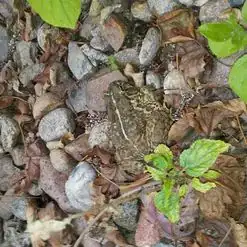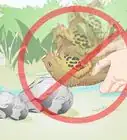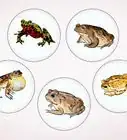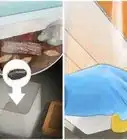This article was co-authored by Pippa Elliott, MRCVS. Dr. Elliott, BVMS, MRCVS is a veterinarian with over 30 years of experience in veterinary surgery and companion animal practice. She graduated from the University of Glasgow in 1987 with a degree in veterinary medicine and surgery. She has worked at the same animal clinic in her hometown for over 20 years.
wikiHow marks an article as reader-approved once it receives enough positive feedback. This article received 40 testimonials and 92% of readers who voted found it helpful, earning it our reader-approved status.
This article has been viewed 613,864 times.
American toads are not typical pets, but they can be kept that way if you know how to care for them. Set up an aquarium for it with materials that mimic nature so that your toad will be comfortable in your home. You can show love for your toad by maintaining its habitat, feeding it live insects, and looking out for its health.
Steps
Housing an American Toad
-
1Buy a 15 gallon (56.8 L) aquarium for your toad or a plastic storage bin. House your American toad in an aquarium or plastic bin that is at least 24 inches (61 cm) long, 12 inches (30 cm) tall, and 12 inches (30 cm) wide. These are the measurements for most standard 15 gallon (56.8 L) aquariums. Purchase an aquarium at a pet store or online.[1]
- Be sure to buy an aquarium with a lid that closes securely.
- Never place the tank in direct sunlight because it will overheat the toad.
-
2Line the tank with 3–4 inches (7.6–10.2 cm) of substrate material. A substrate is a material placed at the bottom of a cage or tank that that absorbs your pet's waste and allows it to burrow. Fill the bottom of the aquarium with an organic material such as potting soil, moss, or shredded leaves. You can also purchase special substrates such as ground coconut fiber or forest bark bedding at pet stores.[2] .
- Avoid using gravel or sand as a substrate as they can be harmful if swallowed by your toad.
Advertisement -
3Add hiding spots to the aquarium. Toads like having places to hide in their habitat. Find or purchase items that will mimic nature, such as pieces of driftwood, large dried leaves, or pieces of tree bark. You can also add items like flower pots for large, sturdy hiding spots.[3]
-
4Add a large water dish that is no deeper than the height of the toad. Most toads will soak in an available water source at night, including their water dish. Choose a water dish that is wide enough to accommodate your toad, but not taller than it. This water should be changed each morning, or whenever it looks cloudy.[4]
- Amphibians are sensitive to chlorine so avoid using chlorinated municipal tap water.
- Use bottled water or filtered water.
Feeding the Toad
-
1Feed your toad live insects that can fit into its mouth. American toads are carnivorous and eat insects as their sole source of nourishment. They prefer them live and might not consume them if they are not moving. As a general rule, you can feed your toad any live insect that is small enough to fit into its mouth.
- Worms and crickets, which can be purchased from pet stores, should form the bulk of your toad's diet.
- Avoid feeding your toad flying insects, which it may not be adept enough to catch.
- You can feed your toad insects that you find in nature, such as spiders or ants.
-
2Feed your toad 3-6 insects every 2-3 days. Be sure to give your toad at least 3-6 live insects a day to eat to maintain its weight. If the insects are particularly small, such as ants, feed your toad twice as many for the same results. Space out feedings to keep your toad satisfied.
-
3Add a calcium supplement powder to the bugs every 4th feeding. Your toad's nutrition should be enhanced with help from a calcium supplement. Simply sprinkle a bit of the powder over the insects you are feeding your toad before putting them in the aquarium. Do this once every 4 times you feed it, which is enough to boost your toad's diet.
- Purchase calcium supplement powder from pet stores or online.
Maintaining Hygiene and Health
-
1Replace the substrate every 2 months, or as soon as needed. As a general rule, the substrate material should be removed and replaced every 2 months. If you see that the substrate is visibly soiled before that point, replace it early. While the aquarium is empty, clean it with a 5% bleach solution and rinse it thoroughly.[5]
- Buy a small plastic tank from a pet store to hold your toad while you clean its aquarium.
-
2Find a vet who treats "exotic pets" for your toad. Many veterinarians will not treat toads as they do not have enough experience with their physiology and illnesses. If you suspect that your toad is sick, look for "exotic pet" veterinarians and inquire about their experience with amphibians. An inexperienced vet may inadvertently do harm to your toad while trying to treat it.
-
3Handle your toad as little as possible. Limit touching your toad to when you need to move it and avoid picking it up for fun. Toads prefer not to be handled and get frightened easily by human contact. Their skin may also cause irritation to human skin after prolonged contact, so keep this kind of touching brief.
- Always wash your hands immediately before and after handling your toad. Any lotions, perfumes, or other substances on your hands may irritate your toad.
References
About This Article
To care for your American toad, feed it 3-6 live insects every 2-3 days. You can find spiders or ants outside or buy worms or crickets from a pet store. Additionally, give your toad a calcium supplement powder with the insects every 4th feeding to keep your toad healthy. You should also provide your toad with a water dish that’s at least as wide as your toad is without being taller than it is, since these toads like to soak in water at night. Additionally, be sure to keep your toad in an aquarium that holds at least 15 gallons, and put 3-4 inches of substrate at the bottom to absorb your toad’s waste. For information from our Veterinary reviewer on how and when you should handle your American toad, read on!
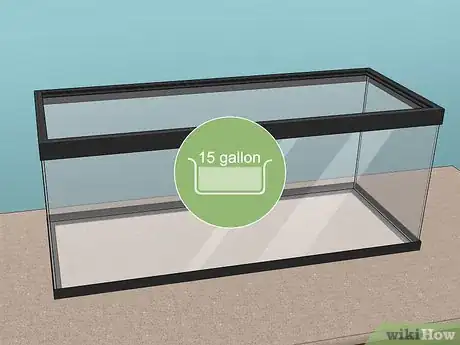
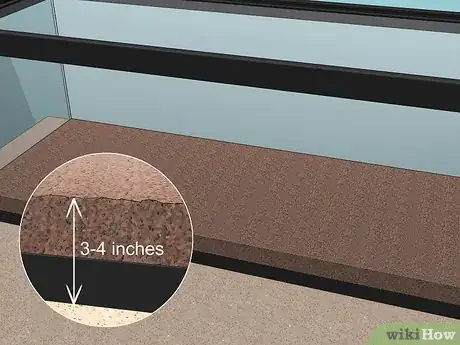
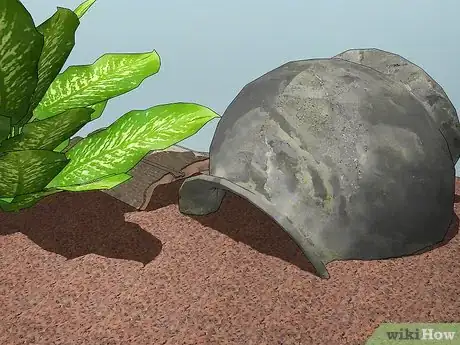
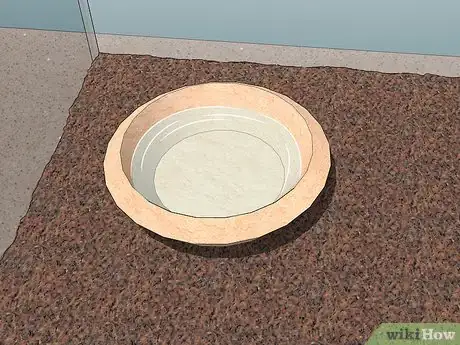
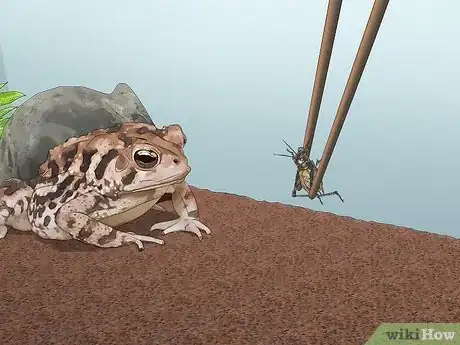
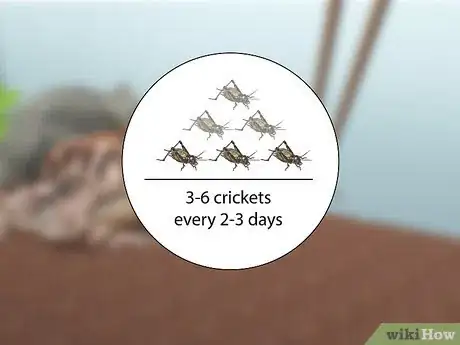

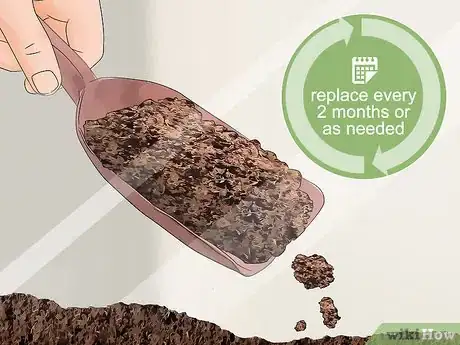

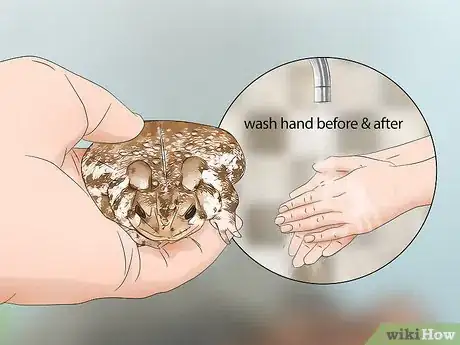


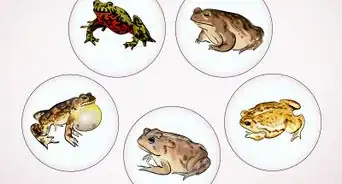
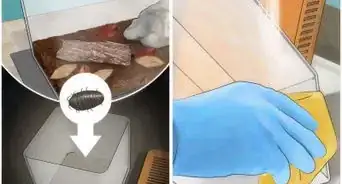
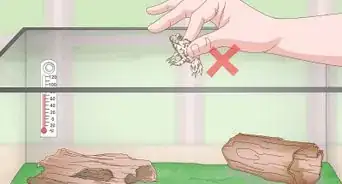
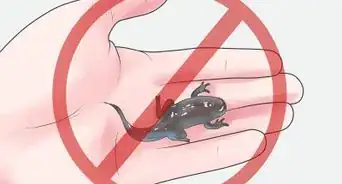
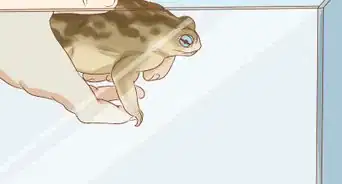



-Step-4.webp)



